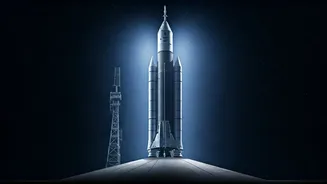ISS: End of Era
The International Space Station (ISS), a symbol of global collaboration in space, is heading towards its final chapter. NASA has set a deorbit date of 2030
for the ISS. This decision signifies more than just the end of a physical structure; it represents a significant shift in space exploration strategies. The ISS, which has served as a critical research platform for over two decades, is now being succeeded by a new model. This transition highlights the evolving landscape of space exploration, moving toward a future where private companies will take on a more prominent role.
Private Space Stations Arrive
With the ISS's planned deorbit, the focus is shifting to private space stations. Several companies are developing independent stations, ready to serve research and commercial purposes. Vast Space is taking a proactive approach. Vast Space is planning to launch Haven-1, the world’s first private space station, which is planned for 2026. This indicates a move towards the commercialization and privatization of space, allowing for increased access and potential advancements. Such stations will provide opportunities for advanced research, space tourism, and other innovative endeavors. The concept encourages a diversified approach to space exploration, moving away from centralized governmental projects.
Future Space Exploration
The transition from the ISS to private space stations marks a crucial moment in the advancement of space exploration. NASA's actions reveal its long-term strategy for space projects. The agency is intending to redirect its efforts toward deeper space missions, such as those towards the Moon and Mars, while also partnering with private companies to run operations in low Earth orbit. The launch of private stations like Haven-1 in 2026 will allow more efficient utilization of resources and promote innovation. The involvement of private companies brings financial investments, technological advances, and fresh strategies to the field of space exploration.











